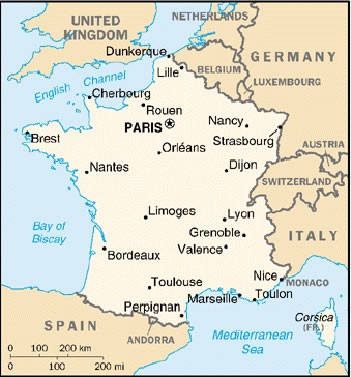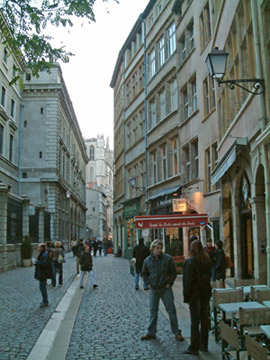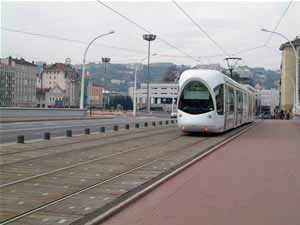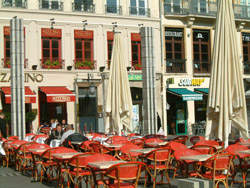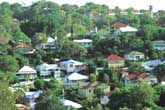
French Home Page |
| Towns in France Home page |
| Les Fêtes |
| All about Paris |
| Icons of France |
| U3A French |
| Useful Stuff |
| Towns in Australia and France | ||||||||||||||||
Australia is one of the most urbanised countries of the world. The majority of its people live in cities on the coast. The big Australian cities are ports, except for the capital, Canberra. In surface area, Australia is in sixth place after Russia, Canada, China, the US and Brazil. However, its population is quite small, there being abut 20 million people.
Even though France is the largest country in western Europe (nearly one fifth the area of the European Union) Australia is fourteen times bigger than it. France has a population of about 62 million.
Australian towns are huge. Five have more than one million people: Sydney, Melbourne, Adelaide, Brisbane and Perth. Alone, these cities account for more than 60% of the population. The big cities in Australia, except for Canberra, are ports. Canberra was created by the government to bypass the rivalry between the two big cities of Sydney and Melbourne. Australian towns and cities were created during an era when public transport reigned, and people owned cars. This allowed the towns to extend themselves over nearly unlimited space, and permitted the continuing expansion of town centres. The towns, therefore, are of immense proportions, just like their continent. In the past, France had a mostly rural population, these days 75% of the population live in cities or towns. However, French cities are much smaller than those in Australia. There are only three that are more than one million people: Paris, Lyon and Marseille.
The population density of France is 107 people per km2, (compared with 2 people per km2 in Australia). It appears a heavily populated country when you compare it with the world average density of 45 per km2. However, you have to appreciate that the distribution of people across the nation of France is unequal.
Compared with Australia, French towns are a lot smaller. Most towns have an historical importance: they are ports situated on the Atlantic Coast or the Mediterranean sea; or communication centres on rivers or the intersections of ancient Roman roads; or they are ancient markets for produce and wine located inland; or even towns created during the Industrial Revolution located near coal mines or natural resources. The majority of French towns were born during the times when the horse was "king", so they have little, narrow streets which do not allow modern traffic to circulate freely. In fact, many have now been turned into pedestrian areas, like this street in Lyon.
In Australia, the city plan tends to be similar where ever you are. In the centre, or near the port, you find the city, which comprises the CBD (or business area), the administration and shops. From here, there are parks between the city and the inner residential suburbs. Further out, the more modern inner and outer suburbs form gigantic ribbons of freestanding houses, interspersed with green areas and parklands. These suburbs are pleasant. On the other hand, the older city centres are in the process of being gentrified and are becoming more attractive.
It is nature's presence which makes Australian towns pleasant. The parks with trees, the hills left in a wilderness state, the little green areas create open spaces that seems to be everywhere.
In France, the historic towns are built surrounding a castle or a cathedral. The centres are old. There are no sky scrapers, but blocks of apartments of five or six storeys that date from the 19th century (or even earlier). There are residential apartments, little shops, department stores, business areas and pedestrian malls in the centre. In industrial towns, there are canals, factories and railways. The government encourages clean-up programs for old and dirty city centres, which have been polluted by smoke and pollution of past years.
The beautiful city of Carcassonne has been carefully restored. Now it is usual for a ring road to take tourist traffic and heavy vehicles around the town, so that the little narrow streets in the centre are devoted to pedestrians.
French suburbs are modern, with sky scrapers, hypermarkets and administration centres. There are fewer and smaller parks than in Australia. However, French towns are pleasant with their shaded boulevards, their footpath cafés, their picturesque markets, their historic and charming atmosphere, and their lively lifestyle by day and night.
|



